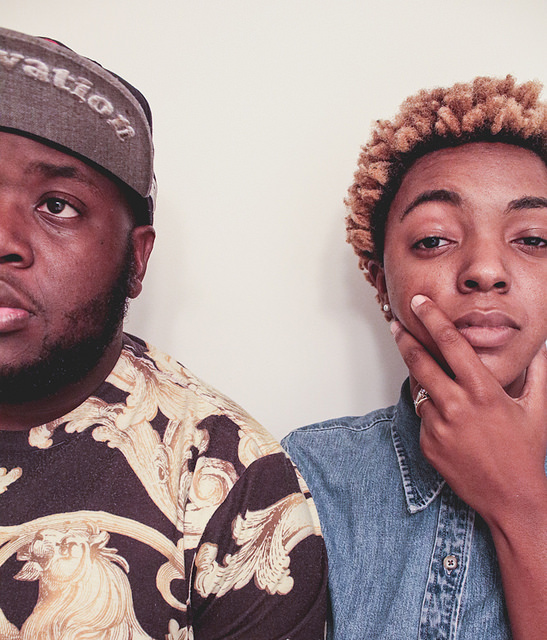
For the longest time, I viewed my resentment as a product of other people’s behavior.
 For decades, I put other people’s needs above my own and I could feel their tug. We’ve all felt them in some form.
For decades, I put other people’s needs above my own and I could feel their tug. We’ve all felt them in some form.
Perhaps it’s our child literally tugging on our shirt, asking for attention. Or our partner, energetically pulling at us to do something. Or a client, filled with urgency to get a project done yesterday.
Sometimes it’s all of these tugs at once. It can be overwhelming.
I mistakenly thought that because I could feel others’ tugs, I had to do something about them—immediately. So I reached out to console, comfort and meet expectations. I thought that by taking care of others first, I would have more space to relax and focus on me.
But that was the fantasy, not the reality.
Those tugs were ever-present and kept my attention on others, ignoring the resentment building up, begging me to choose something else. At the time though, I was unaware that I could choose something else—that something else being me.
Back then, I didn’t know the truth about resentment. I viewed it as a sign that I was right and others were wrong. I held onto my resentment with a righteous attitude, like a badge of honor: “See how much I’ve given to others? See how good I am by taking care of everyone?”
My resentment fueled a sense of martyred anger. I blamed others for being needy and demanding. I began to view relationships (in all their many forms) as obligations that drained me, so I pulled away and swung to the other extreme: putting my own needs and desires first.
I went so far as to exclude others from my world. I thought if I spent more time alone I could change this pattern of losing myself in others’ needs. This wasn’t the answer either, but it did give me distance from the pattern, which allowed me to gain a new perspective on resentment.
I saw how resentment was a signal. Resentment was letting me know that I had crossed my own boundaries. I had said, “No” when I meant “Yes,” and “Yes” when I meant “No.” I had ignored my own inner voice, my guide to knowing what I truly desired.
It took practice and patience to slow down and tune into my inner voice so I could hear my own Yes and No. The more I listened, heard and acted on those desires, the more I trusted myself.
Rather than remaining a righteous badge of honor, resentment became my ally.
Now I’m able to choose how to respond based on consideration for everyone involved in the situation. I see how it’s a both/and in relationships, rather than an either/or. I’m not putting my desires over others and I’m not putting others’ desires over mine. I’m discovering how this creates possibility and greater intimacy rather than resentment, which can lead to limitation and separation when we don’t see it for what it is.
Below are six steps that helped me receive the gift of resentment and transform my “others first” pattern. They helped me step into a space of curiosity so that when I did perceive a tug (or many tugs), I could slow down and respond rather than react.
- When you become aware of a tug, notice the sensations in your body. Honor your body for sharing this awareness with you.
- Acknowledge (silently or out loud) the people who are tugging. They desire something from you because of who you are. Honor them for reaching out to you for support.
- Recognize that you do not need to do anything with this awareness or this energy. Under most circumstances, you do not need to act in this moment.
- Breathe. Take several deep breaths and expand your energy to fill the room, the house, the neighborhood, the state you live in and keep going. Don’t think about it, just play with how expansive you can be with your own energy.
- Check in with yourself by asking these questions:
- What needs and desires do I have?
- What would serve me the most in this moment?
- What would contribute the most to the lives of others and myself right now?
- What action can I take to create the most for everyone involved?
- Now choose which action you wish to take (or not) based on consideration for yourself and others.
By slowing down and tuning in to our bodies in this way we tap into a greater awareness of what is occurring internally. When we do this, we’re less apt to fall into our default reactions and more likely to act from a place of clear consideration for everyone involved. This cultivates greater trust and intimacy with both others and ourselves.
Please remember: nobody’s tug is more important or more powerful than you. Don’t leave yourself out of your choices or your life. You are the most important ingredient in it.
And if you need extra motivation, check out this video from Access Consciousness. The tools I learned here have supported me in letting go of the default patterns of putting others first and instead create a pattern of including myself and others in my choices.
Author: Megan Walrod
Editor: Nicole Cameron
Image: Adrian V. Floyd/Flickr







Read 16 comments and reply